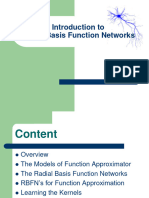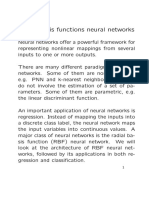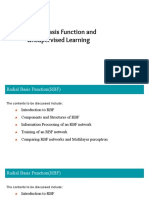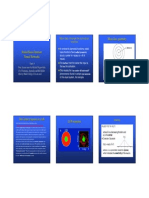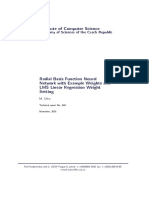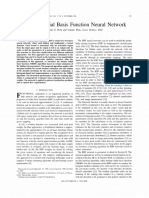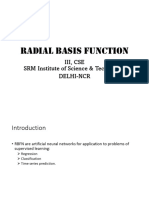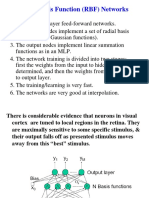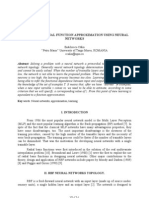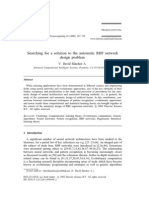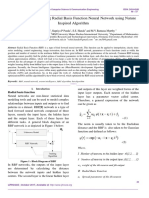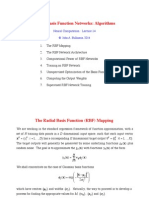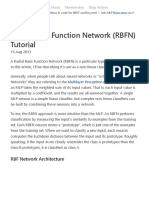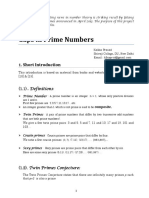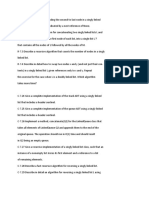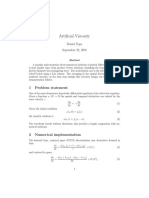0% found this document useful (0 votes)
42 views12 pagesInterpolation and Basis Function
A Radial Basis Function (RBF) network is an artificial neural network that utilizes radial basis functions for tasks like classification and regression, consisting of an input layer, hidden layer with radial basis functions, and an output layer. RBF networks are effective in modeling complex, non-linear relationships and are trained by selecting centers and widths of the basis functions and adjusting weights between layers. They are widely used in applications such as image recognition and time series forecasting due to their ability to approximate functions and classify data.
Uploaded by
photo.svit.2022.2025Copyright
© © All Rights Reserved
We take content rights seriously. If you suspect this is your content, claim it here.
Available Formats
Download as DOCX, PDF, TXT or read online on Scribd
0% found this document useful (0 votes)
42 views12 pagesInterpolation and Basis Function
A Radial Basis Function (RBF) network is an artificial neural network that utilizes radial basis functions for tasks like classification and regression, consisting of an input layer, hidden layer with radial basis functions, and an output layer. RBF networks are effective in modeling complex, non-linear relationships and are trained by selecting centers and widths of the basis functions and adjusting weights between layers. They are widely used in applications such as image recognition and time series forecasting due to their ability to approximate functions and classify data.
Uploaded by
photo.svit.2022.2025Copyright
© © All Rights Reserved
We take content rights seriously. If you suspect this is your content, claim it here.
Available Formats
Download as DOCX, PDF, TXT or read online on Scribd
/ 12





